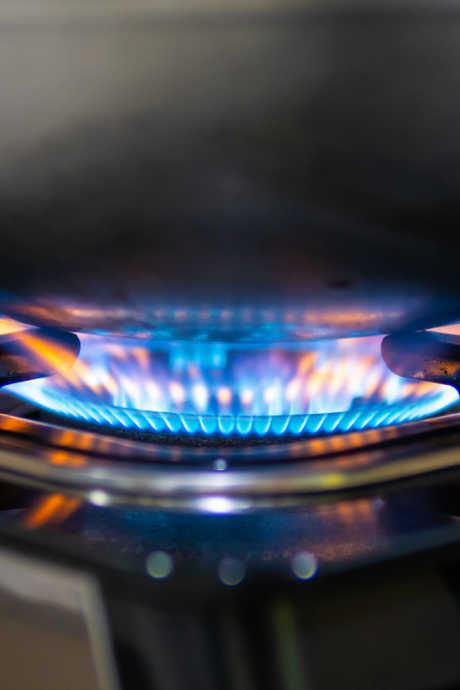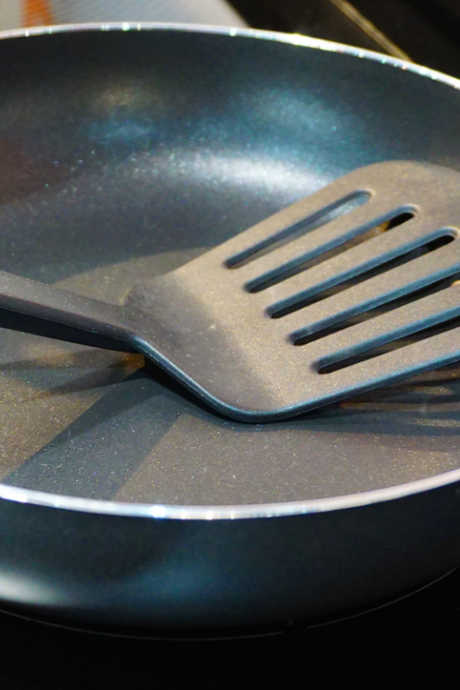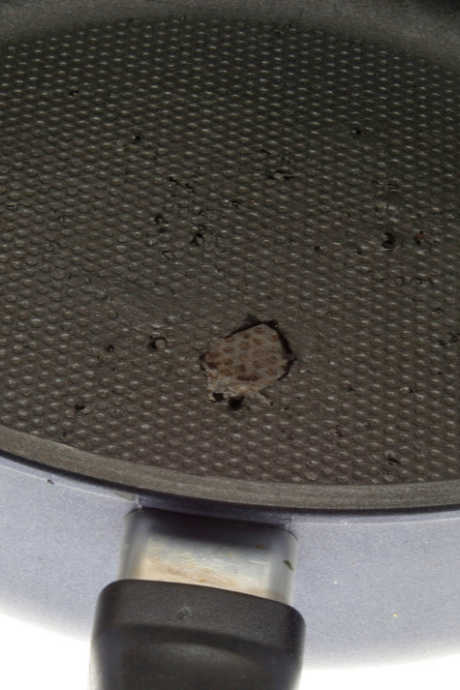Keep It or Toss It: Nonstick Cookware
Posted by Julie on May 6th 2019
Even if you buy quality kitchenware and care for it unfailingly, most items will need to be replaced at some point in the future. This new series of posts will cover a few of those items in your kitchen that may have you asking yourself, “Should I keep it or toss it?” Keep reading to learn more about nonstick cookware: how to extend its lifespan and keep it as long as possible, and what signs to watch for when it’s time to toss it.
Keep It: How to Care for Nonstick Cookware
When you purchase nonstick cookware, it should be understood that this cookware will need to be replaced. Unlike cast iron and stainless steel, which can last for decades, nonstick cookware generally lasts for a maximum of five years. Ceramic and hard anodized nonstick cookware can outlast cheaper options. But what really makes a difference in the longevity of nonstick cookware is how you use and care for it.
Stay Cool
Nonstick cookware isn’t meant to be heated until it’s screaming hot, like cast iron. When nonstick pans reach temperatures higher than 500ºF, the coating starts to undergo chemical changes. While it’s unlikely that your pan will release enough fumes to sicken you or leach chemicals into the food you’re cooking, high heat is detrimental to the nonstick coating.

Good Housekeeping tested nonstick cookware to see how fast it heated up beyond 500ºF. Empty pans, pans with just oil, and pans used for cooking meat quickly climbed into the danger zone when heated on high. Their best recommendation is to keep the heat at medium or lower, for safety’s sake as well as the life of your pan. That means broiling and searing are out, but cast iron and stainless steel are better suited for those cooking techniques.
Easy Does It
We know many nonstick cookware brands assert that their pans are safe for use with metal utensils. But why take the chance of using metal when wood, silicone, and nylon tools can’t possibly scratch the coating? Even a small scratch will lead to chipping and peeling. The longer you can keep the nonstick coating intact, the longer your cookware will last.

Nonstick cookware can even be damaged by stacking other cookware inside it. One easy way to prevent scratches is to use pan protectors, like these from Le Creuset or Swiss Diamond. They’ll come in handy for all of your cookware, but they’re especially good for keeping nonstick cookware free from scratches.
Clean Up
We also know many nonstick cookware brands claim their pans can go in the dishwasher. But the high heat and harsh detergents also shorten the life of nonstick cookware. One of the advantages of nonstick cookware is how easily it cleans up. There’s no need to put it in the dishwasher when you can hand wash and dry it in only a few minutes. Two more ways to preserve your nonstick cookware are to remove leftover food from it promptly, and to wait until it cools before running cold water on it.
Toss It: When to Replace Nonstick Cookware
Even when you’ve taken great care when using and cleaning your nonstick cookware, the coating will eventually wear out. Your first clue that it’s time to shop for new cookware is likely to be scratches on the surface of the pan. While it’s possible the coating will flake or chip off into your food, it’s unlikely to be harmful. However, it’s certainly unappetizing, and you’ll want to replace your cookware before you ingest any more flakes or chips.

You may also notice that your pan simply doesn’t perform the way it used to, which means the pan is likely warped or the surface has lost its nonstick properties. A warped pan has an uneven bottom, which means it won’t heat evenly or cook evenly. When a pan is no longer nonstick, this degradation is usually most apparent when cooking eggs. They won’t release as easily, and more egg will stick to the pan.
In short, if your nonstick cookware is warped, scratched, flaking, chipping, or just doesn’t get the job done like it used to, it’s time to toss it.
The next post in this series will cover cutlery and kitchen tools -- how to keep them longer and when to say goodbye. Stay tuned!
 Free shipping over $49
Free shipping over $49










